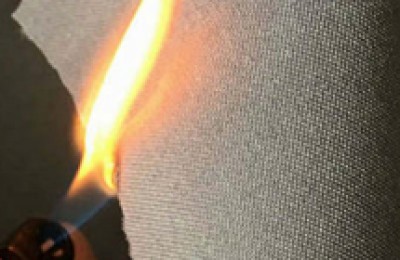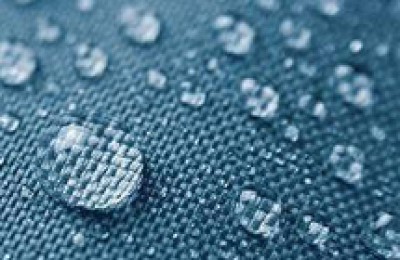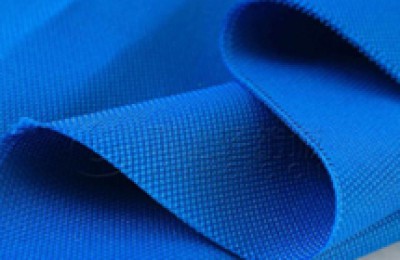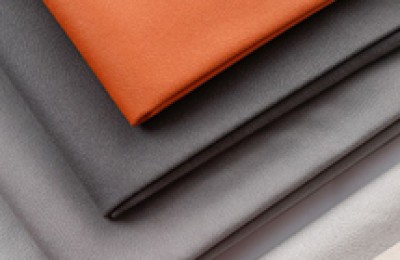Spots are a single color mixed with various spots or markings such as white, light, dark, dark or black. They come in various shapes and sizes, most of which are irregular and have many causes.
Causes
1. White stains
1) Such as wax spots, pulp spots, etc. , water droplets, hard water and sand defects;
2) The blank is not fully soaked before dyeing, causing white spots after dyeing;
3) There are calcium spots and alkali spots on the cotton fabric Spots;
4) When calcium hypochlorite is used in the bleaching process, the decomposed lime remains on the fabric without being washed, resulting in white spots that resist dyeing after dyeing;
5) The semi-finished product is partially air-dried after mercerization, and the fabric is partially alkali-containing;
2. Light stains
There are dye repellents on the fabric, resulting in semi-finished products. Prevent, or during the dyeing process, water dripping from the cloth dilutes the dye solution, and the fabric is stained with floral wool;
1) The fabric is not cooked through, and the dye base contains dye-repellent substances;
2) When the rough fabric is jig-dyed, there are water stains on the fabric, and the fabric is rolled into the roll and left for too long, causing shallow water stains;
3) When dispersed blue dye is used, the cloth surface often Very light color shadow stains will appear;
4) Reactive dyes are rolled and stacked, and the film is not wrapped tightly enough, and condensation water penetrates into the cloth rolls, causing light-colored stains;
5 ) After direct dyeing, the color is not fixed and encounters water droplets, causing light stains;
3. Dark stains
The cause is related to the fabric fading before dyeing Whether the slurry is clean, alkali-containing conditions, dyeing chemical operation, foaming conditions in the dye liquor, whether there are colored cilia on the drying cylinder, the execution of the dyeing process, and whether there are heavy metal salts and other impurities on the fabric and in the dye liquor. close relationship.
1) There are starch stains on the fabric, which turn into dark stains after dyeing;
2) The fabric appears cloudy in color on the foam in the indylin chromogenic solution Spots;
3) Polyester-cotton blended fabrics are dyed and dried in a drying drum. The drying drum is stained with colored cilia, which turn into dark spots after hot melting;
4) Color phenol color Poor base dissolution is brought to the fabric and becomes irregular dark dye spots after pad dyeing. In addition, it will also occur if the roller has scars and is difficult to pad dry;
5) The temperature of the ice dye developing solution, The pH value is high, forming tar-like scum;
6) The naphthol primer dries too fast, which can easily cause dark spots;
7) Calcium, magnesium, zinc, aluminum The effect of other metal ions on diazonium salts;
8) Fabrics are in long-term contact with copper during the bleaching process and when priming with naphtha;
9) Neutral dyes Dissolved in hot water, it is easy to condense and adhere to the fabric;
10) When dyeing with sulfur dyes, the semi-finished product will be unevenly desized, dirty, or have local air-drying alkali spots, which will cause erythema after dyeing;
11) During use, the cylinder of the cylinder singeing machine will gradually produce an oxide film, which will affect the quality of the singeing;
4. Rust spots : Related to rust
1) There is rust on the cloth before scouring and bleaching, which has not been removed by pre-treatment;
2) In contact with iron during dyeing and finishing;
3) When dyeing with direct dyes, the salt contains too much impurities, which corrodes the ironware and causes rust;
4) The water used in processing contains rust;
5. Spots
Mainly occur during scouring. Uneven cooking causes poor circulation. In addition, insufficient materials are used, the time is too short, and desizing is not clean before scouring. The temperature is too low, etc.;
6. Alkali spots
Mainly occur in the scouring process, the scouring liquid contains a lot of impurities, and the pot cover is not spread Well, the circulation of the scouring liquid is poor, and the residual liquid is not drained cleanly when the cloth is boiled, causing local air-drying, causing alkali-containing impurities to stick to the fabric. After scouring and steaming, it is not washed clean, and the moisturizing and heat preservation during desizing is not enough, causing air-drying phenomenon, or If it is not dried in time after mercerization, air drying occurs;
7. Calcium spots
are related to the presence of calcium ions. Use hard water for scouring and bleaching. The residual calcium in the fabric has not been removed;
8. Mildew spots
There is slurry on the fabric, which can easily form mold spots under a certain temperature and humidity;
Overcoming methods
Dyeing finished products show white stains, light or dark stains
1. There should be no wax spots on the dyed base;
2. The desizing of semi-finished products must be clean;
3. Pay attention to the quality of the dyeing water;
p>
4. Prevent water droplets from dripping on the dyed base or during the dyeing process;
5. The following methods can be used to prevent and remove rust stains:
1) Boiling Adding sodium silicate to the scouring liquid can stabilize the iron contained in the scouring water;
2) The guide rollers and cloth rolling rollers can be coated with baked ethylene oxide resin to prevent rust;
3) If there are rust spots on the fabric, wash them off with warm oxalic acid solution, and then wash them with clean water, otherwise the fibers will be brittle and damaged;
6. Prevent spots and alkali spots. , calcium spots and mildew spots
1) Raw spots: Cook evenly, if not, cook again;
2) Alkali spots: Cover the pot surface with cloth It must be laid well to prevent the cloth from floating out of the liquid. The residual liquid must be washed in time to prevent the cloth on the walls of the cloth pot from being heated and baked. The alkali on the cloth will be concentrated and turn into uneven stains. Once discovered, it can be Wash away with dilute hot hydrochloric acid;
3) Calcium spots: The scouring water should be softened before use. Water softener should be added to the scouring liquid first, and then soap, etc., if calcium spots are found before dyeing, use dilute Hot hydrochloric acid washing treatment;
4) Mildew:
7. Strictly control the quantity of products in process and try to avoid stains during transportation;
8. Pay attention to the chemical material operation to ensure that the dye is fully dissolved;
9. Ensure that the process is on the truck during dyeing;
10. Pay attention to the influence of foam during the dyeing process;
11. Try to eliminate the interference of heavy metal ions;
12. Clean the equipment;
Identification of stains
1. Characteristics of mildew spots: different shapes, dotted and lumpy, and colors including yellow, green and black. Mild ones can be removed with cooking, while severe ones are difficult to remove. , and damage fibers. You can smell varying degrees of musty smell before the formation of mildew. It is especially easy to produce mildew during the yellow mold season. The occurrence of mildew is continuous and large in number;
2. Semi-finished blanks and dyeing Stains seen on finished products: stains on fabrics, some of which can be seen on semi-finished blanks, such as: stains, rust spots, calcium spots, mildew spots, raw spots (vaguely visible), alkali spots (air-dried) (after dyeing), but some stains are difficult to find even if they already exist before dyeing, such as wax spots and pulp spots;
3. Characteristics of water-repellent stains: As long as the rapid hair effect method is used to identify them, water-repellent stains The stains cannot be wetted, and water-repellent stains are mostly caused by wax spots and raw spots;
4. Identification of wax spots and raw spots 1) Different colors: wax spots have stronger anti- Dyeing effect, white spots appear after dyeing, the spots are not as strong as wax spots, and the stains after dyeing are lighter in color; 2) Different shapes: wax spots are generally smaller in shape, and the shape of the defects is related to the waxing operation, generally manifesting as regular It cannot be dyed in the direction, but can be dyed in the weft direction or has slight dye repellency, so it appears as long strips of stains in the meridional direction, and the spots are larger in shape, like moire;
5. Spots and stains Identification of alkali spots
1) The locations of defects are different: Calcium spots are mainly the deposition of impurities on the surface of fabrics, most of which occur on the surface of the pot, while spots are caused by opaque cooking and occur at the site Uncertain;
2) Treat with dilute hot hydrochloric acid to remove calcium spots, but the original spots cannot be eliminated;
3) The resulting color varies: the calcium spots are darker after dyeing and the original spots are not. The spots will be lighter in color after dyeing;
6. Identification of alkali spots: alkali spots will turn into yellow stains after drying, visible on white cloth, and the pH value is above 7;
7. Rust Identification of stains and oil stains
1) The shapes are different, the outer contour of rust stains is irregular, while the outer contour of oil stains is smoother;
2 ) After alkali treatment, oil stains can be removed;
3) Washing with oxalic acid, rust stains can be washed away, but oil stains cannot;
8. Oil stains and color Identification of stains
1) Slight oil stains can be removed with detergent, but colored stains cannot;
2) Colors vary. Oil stains are light yellow or brown, and the oil repelles dyeing. The color of the stains is often the same color of the dyed finished product, or a single color of the color matching dye;
9. Before and after pad dyeing Identification of stains caused by floral wool: before pad-dying, there is floral wool on the fabric, resulting in a light color; after pad-dying, there are colored floral wool on the drying cylinder, which turns into dark spots after dyeing;
10. The difference between roller stains and dye liquor suspended solids: The roller has scars and unevenness, which means that the fabric is not easy to dry, the stains are regular, the stains and color stains are consistent in depth, the dye is poorly dissolved or there are suspended solids existence, causing stains on the fabric;
11. Characteristics of oil stains and printing defects: mostly occur on thin and tight fabrics 1) Heavy stains are damaged due to washing, and the color absorption is relatively large If there are more, the color will be darker; 2) The detergent used for washing has not been washed, and there are impurities around the washing area of the gray fabric, and the edges of the stains will resist dyeing, and the color will be lighter. </p







